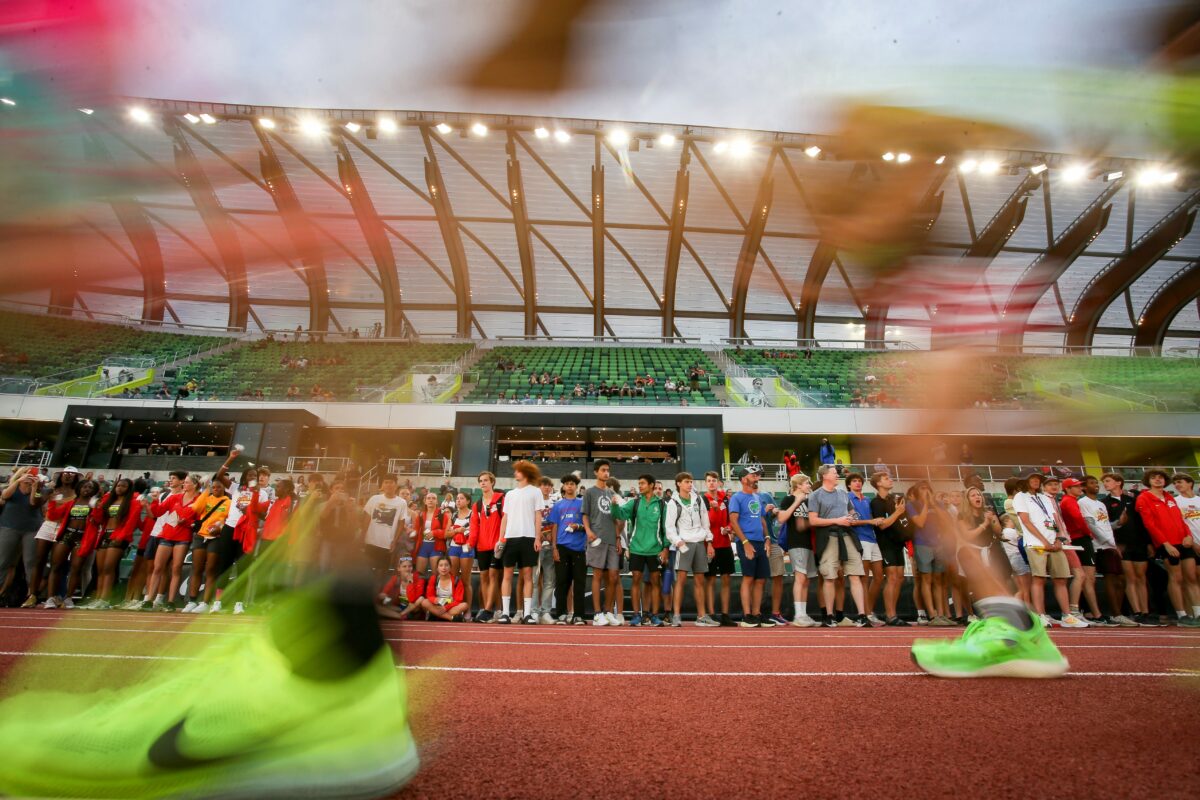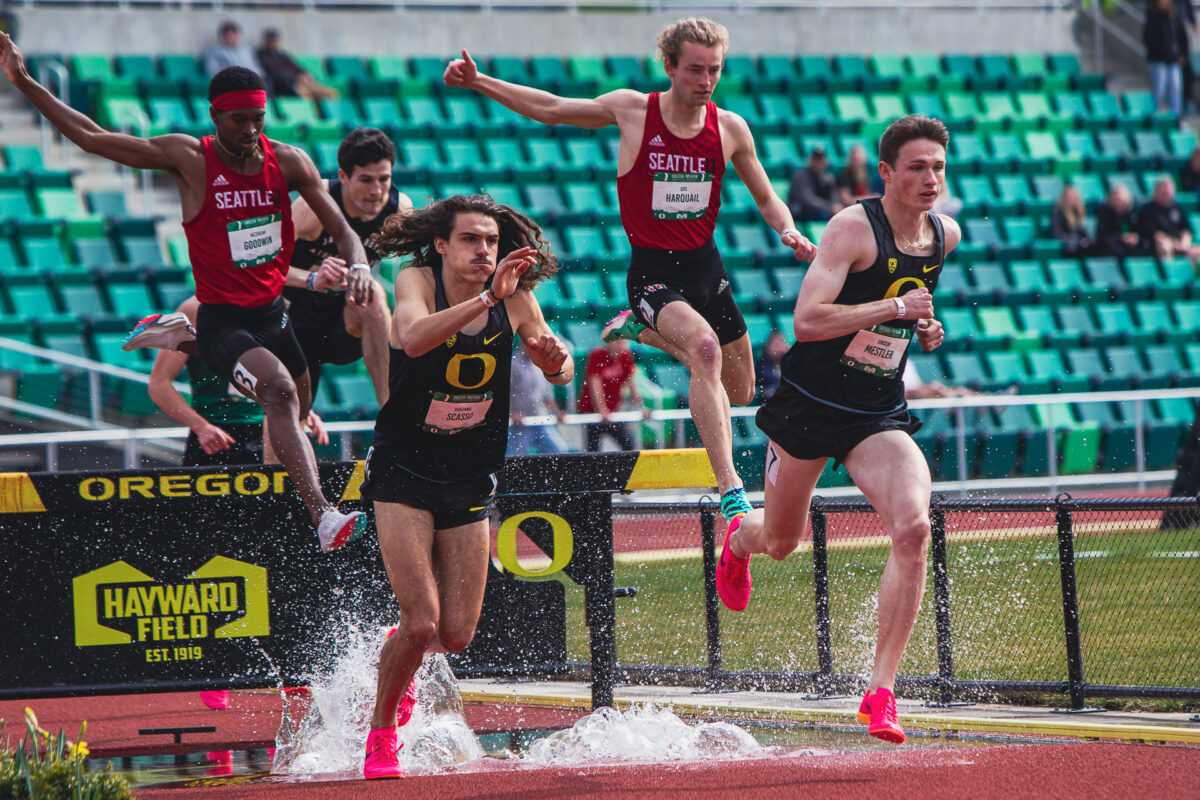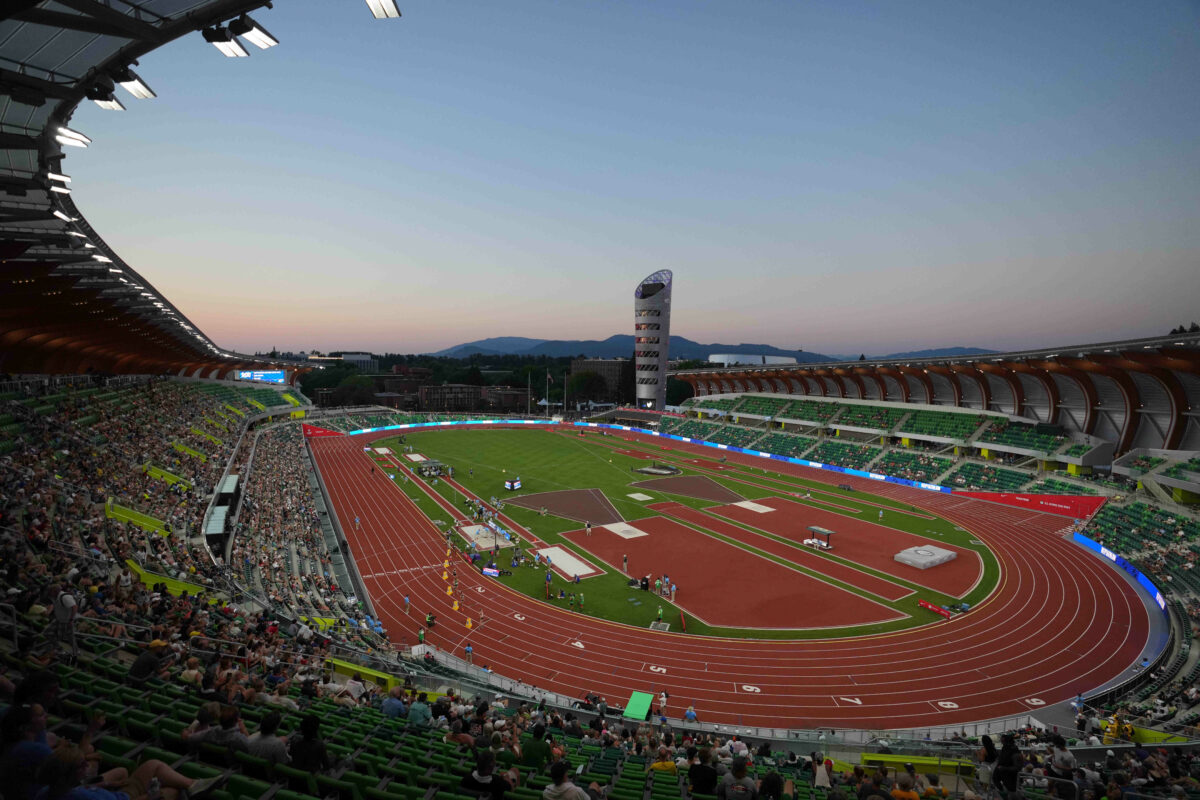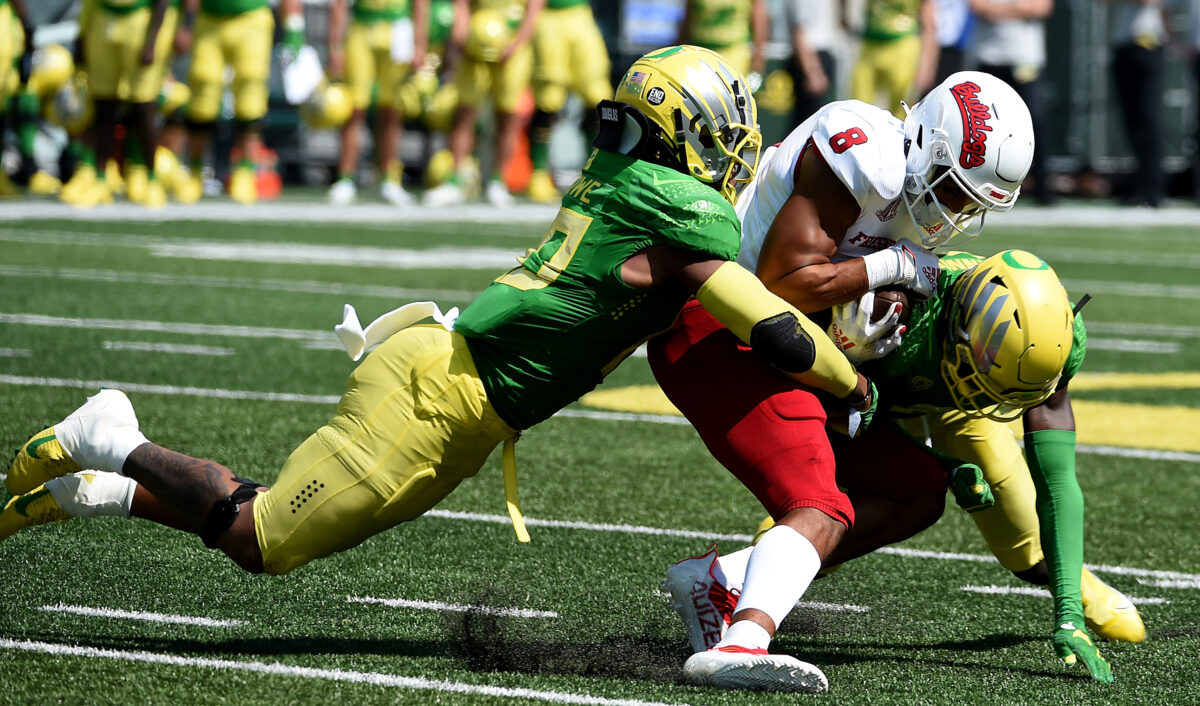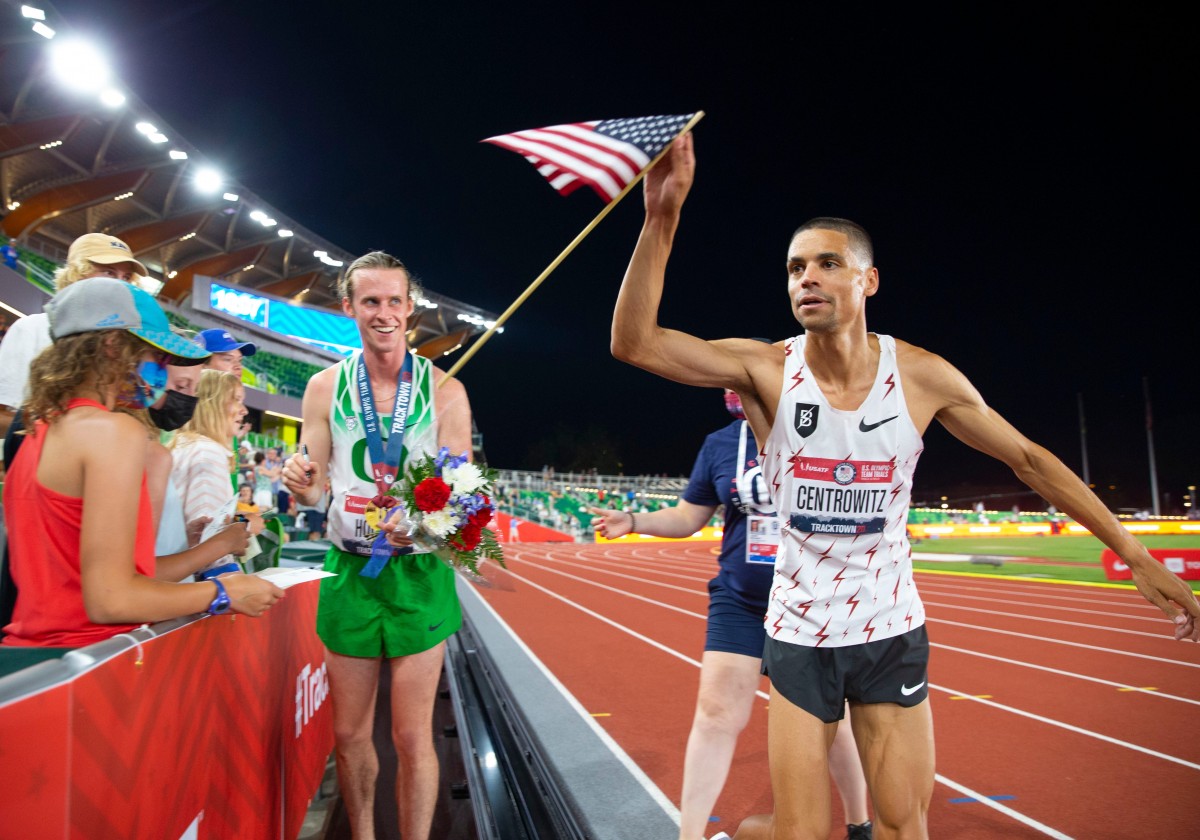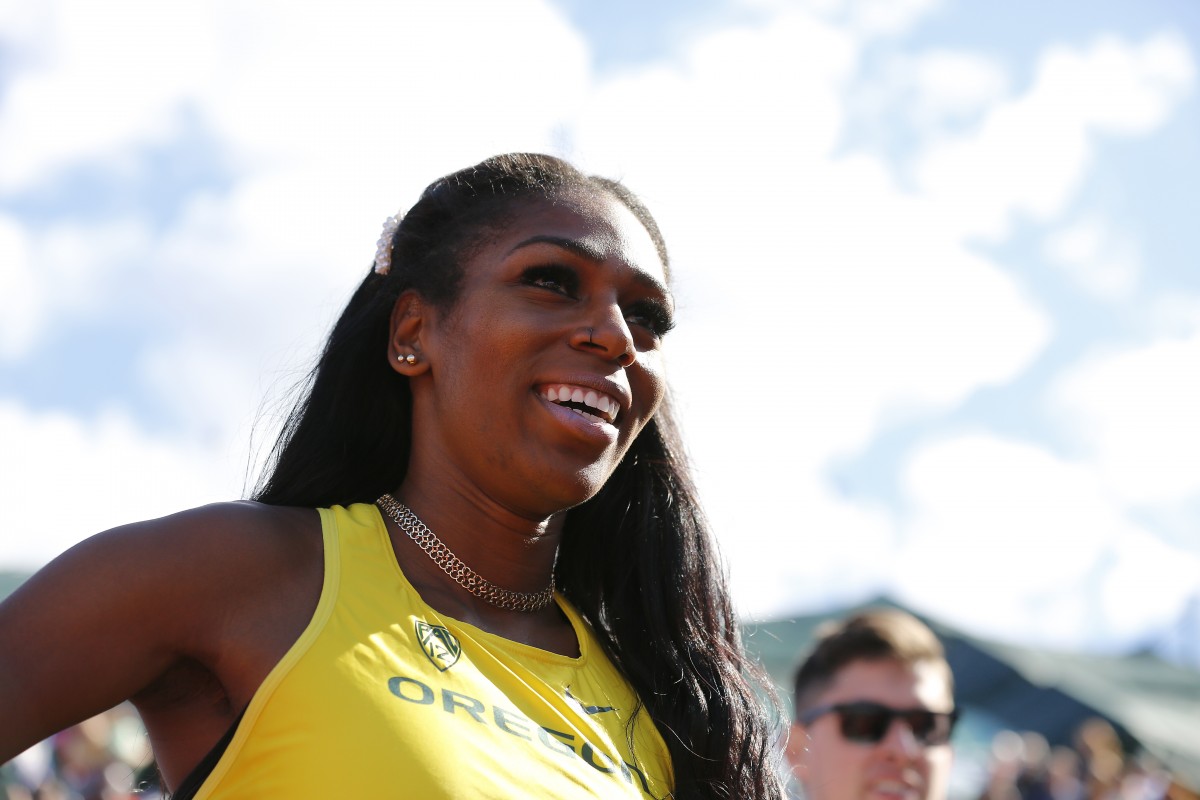The concept of ‘speed’ is nothing new for the Ducks. The track speed they have on defense now, though, might turn some heads.
[jwplayer FbnS4d4h]
Now that a few days separate us from the chaotic and successful 24-hour period that was national signing day, we’ve gotten a chance to really study Oregon’s 2022 recruiting class and see what it brings to the table. While we will say again that the class is certainly not complete — there are a couple more additions that could be made in the coming days and months — for the most part, we know who the incoming freshmen will be next season.
And those incoming freshmen are going to be fast.
[lawrence-related id=18910]
Looking at the class as a whole, it’s incredibly clear that speed was a trait that the Ducks coaching staff was looking to prioritize in their offers. Many of the recruits that Oregon got ran track in high school, and their numbers between the lanes will make them arguably one of the fastest secondaries in the nation in the coming years. Check out a few of these times, according to 247Sports:
- CB Jahlil Florence: 10.77s (100m), 21.93 (200m)
- CB Jalil Tucker: 10.78 (100m), 22.41 (200m)
- CB Khamari Terrell: 10.72 (100m) 21.06 (200m), 46.26 (400)
- LB Devon Jackson: 10.54 (100m), 21.63 (200m)
- LB Harrison Taggart: 10.69 (100m)
- WR/DB Justius Lowe: 11.08 (100m)
Don’t know how impressive those numbers are? I don’t blame you. According to Athletics Recruiting, the “standard” for a D1 track athlete to be competitive in the 100-meter dash is between 10.5-11.0 seconds. For the 200-meter dash, it’s 21.25-22.7 seconds.
Looks like Oregon’s newest guys certainly make the cut.
“I think we ended up signing 9 guys that had a track and field background, and we signed 5 guys that run under a 10.7 100-meter, which for us on defense, the way we play and the brand of football we play, it’s really, really important,” Oregon head coach Dan Lanning said on national signing day. “In fact, we have a couple of guys coming in that are going to be able to compete in track as well. I know I was excited on signing day, but I think Coach [Robert] Johnson was just as excited, so that fires me up.”
[lawrence-related id=18239]
Speed is not something that is foreign to the Oregon Ducks. They literally quickened the pace of the game in the last decade under former head coach Chip Kelly, who revolutionized the up-tempo no-huddle offense, and eventually had opposing players faking injuries just to give their teams a breather. As I said, speed is nothing new, but elite speed across the defensive backfield is an area where the Ducks can certainly gain an advantage.
“The game is about speed, right?” Lanning said. “And we’ve got to be able to run, and hit, and tackle, and catch, and block, and all of those things matter, but speed is one thing that’s hard to change, and we have some guys coming in that we think can do that.”
It appears that they do. If you’ve watched Lanning’s defenses at Georgia, you’ll notice that there are guys constantly flying around the field and making plays with their feet. While a lot of those players are massive five-star athletes, it’s impossible to ignore the quickness with which they move. The Ducks may not be able to fill out their roster with 5-star players at every position just yet, but it’s clear that Lanning is trying to do the best he can to recreate Georgia’s defense in the Pacific Northwest. That starts with speed, and the ability to get anywhere on the field in an instant.
That’s something that the Ducks will likely have no problem with going forward.
[listicle id=17625]
